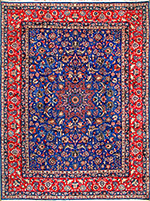Textiles Studies

Textile Research Works
Date of this Version
2015
Document Type
Article
Citation
Mathematics Education for the Future Project: Proceedings of the 13th International Conference Mathematics Education in a Connected World (2015)
Abstract
Getting students involved in careful observation and analysis and encouraging their exploration of cultural forms of expression is an excellent means of introducing mathematical ideas. Geometric patterns abound in Islamic art and architecture. Exhibiting great ingenuity over the centuries, Muslim artists and craftsmen created beautiful patterns to adorn architectural monuments and exquisite objects. The Alhambra in Spain and the Taj Mahal in India offer the most famous examples of extraordinary patterns using brick and glazed tile, or carved and inlaid marble. Other examples of patterns are made using metal, wood, and fiber. Students may gain conceptual and theoretical understanding of patterns through activities and hands-on exercises that relate circles to centers, axes and grids, symmetry and tessellations. Through folding and cutting, drawing and coloring, one learns about relationships among number, shape, and the nature of space, which so characterize geometric patterns seen in Islamic architecture, silk textiles, illuminated manuscripts, wood inlaid with mother-of-pearl, carved stone, and other materials, contributing to a beauty of form, pattern, and structure.
Included in
Art and Materials Conservation Commons, Art Practice Commons, Fiber, Textile, and Weaving Arts Commons, Indigenous Studies Commons, Museum Studies Commons

